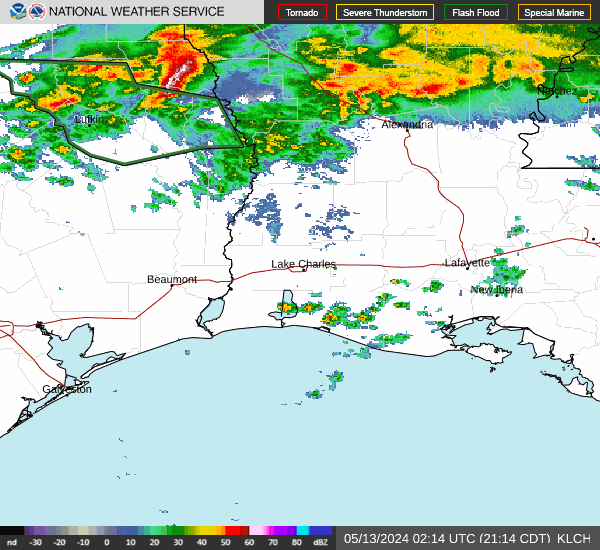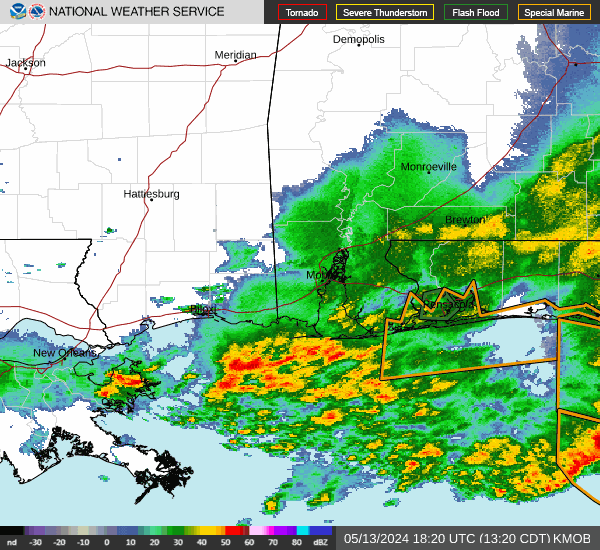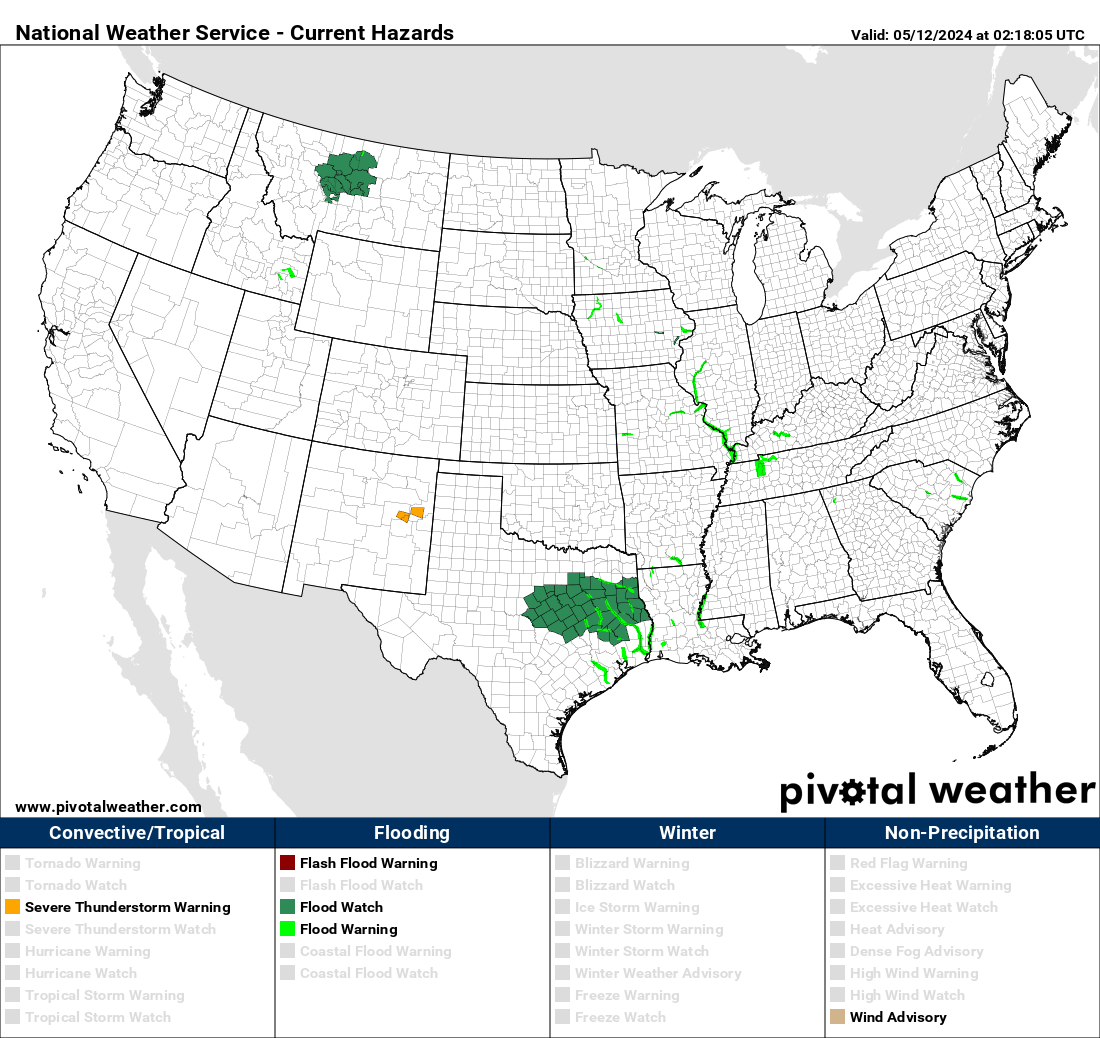Post by HarahanTim - Now in Covington! on Jan 24, 2023 6:52:28 GMT -6
Today's Enhanced Risk, has been expanded to all along the gulf coast.

Forecast Discussion
SPC AC 240541
Day 1 Convective Outlook
NWS Storm Prediction Center Norman OK
1141 PM CST Mon Jan 23 2023
Valid 241200Z - 251200Z
...THERE IS AN ENHANCED RISK OF SEVERE THUNDERSTORMS FROM PARTS OF
THE TEXAS COASTAL PLAIN TO THE CENTRAL GULF COAST AND WESTERN
FLORIDA PANHANDLE...
...SUMMARY...
Severe thunderstorms are expected today from the middle to upper
Texas Coast, spreading eastward across southern Louisiana and into
coastal Mississippi, Alabama and the western Florida Panhandle by
Wednesday morning. Damaging winds and several tornadoes are
anticipated. A few strong tornadoes are expected.
...Gulf Coast Region...
An upper-level low over the southern Plains, and an associated
upper-level trough extending southward into northern Mexico, will
move eastward into central and south Texas today. A 70 to 90 knot
mid-level speed max will translate eastward through the base of the
trough, with the exit region of the jet overspreading the southern
Plains this afternoon. Ahead of the system, low-level moisture
advection will take place with the 60 Fahrenheit isodrosotherm
reaching about 80 statute miles inland across the middle Texas coast
by late morning. As surface temperatures warm, SBCAPE is forecast to
increase to around 1000 J/kg in the vicinity of Victoria with weaker
instability developing further inland. During the morning,
thunderstorms will move eastward across the Texas Hill Country. By
18Z, the storms will likely develop a severe threat, moving eastward
into the western edge of the moist airmass.
Near and ahead of the surface low, surface winds will be backed to
the south and southeast. This combined with 50 to 70 knot low-level
jet will create long and looped hodographs favorable for supercells
and tornadoes. The Victoria, Texas 18Z RAP forecast sounding has 0-3
km storm relative helicity near 350 m2/s2 suggesting a tornado
threat could develop relatively early in the day. Around midday and
throughout the afternoon, convective mode is expected to be
supercellular, as a cluster of storms moves eastward across the
Houston and Galveston areas. Strong speed shear, increasing from
near 20 knots at the surface to 50 knots at 850 mb, will make a
strong tornado possible with any supercell that becomes dominant.
Wind damage and isolated large hail will also likely accompany
supercells. The threat should spread eastward to the Beaumont/Port
Arthur areas by late afternoon.
The surface low will move northeastward into western Mississippi
this evening as a line organizes ahead of a cold front across the
lower Mississippi Valley. Some uncertainty exists concerning
convective mode. The current thinking is that some cells near the
Louisiana coast will remain supercellular and have a potential for
tornadoes. This would be especially true if the conditional threat
materializes of discrete cells developing ahead of the line. The
wind-damage threat will likely increase as the squall-line moves to
the central Gulf Coast around midnight. This line is forecast to
move eastward to the western Florida Panhandle by late in the period
and should maintain a wind-damage and tornado threat. There will be
the possibility of a strong tornado, mainly due to strong low-level
shear associated with the low-level jet.
..Broyles/Flournoy.. 01/24/2023

Forecast Discussion
SPC AC 240541
Day 1 Convective Outlook
NWS Storm Prediction Center Norman OK
1141 PM CST Mon Jan 23 2023
Valid 241200Z - 251200Z
...THERE IS AN ENHANCED RISK OF SEVERE THUNDERSTORMS FROM PARTS OF
THE TEXAS COASTAL PLAIN TO THE CENTRAL GULF COAST AND WESTERN
FLORIDA PANHANDLE...
...SUMMARY...
Severe thunderstorms are expected today from the middle to upper
Texas Coast, spreading eastward across southern Louisiana and into
coastal Mississippi, Alabama and the western Florida Panhandle by
Wednesday morning. Damaging winds and several tornadoes are
anticipated. A few strong tornadoes are expected.
...Gulf Coast Region...
An upper-level low over the southern Plains, and an associated
upper-level trough extending southward into northern Mexico, will
move eastward into central and south Texas today. A 70 to 90 knot
mid-level speed max will translate eastward through the base of the
trough, with the exit region of the jet overspreading the southern
Plains this afternoon. Ahead of the system, low-level moisture
advection will take place with the 60 Fahrenheit isodrosotherm
reaching about 80 statute miles inland across the middle Texas coast
by late morning. As surface temperatures warm, SBCAPE is forecast to
increase to around 1000 J/kg in the vicinity of Victoria with weaker
instability developing further inland. During the morning,
thunderstorms will move eastward across the Texas Hill Country. By
18Z, the storms will likely develop a severe threat, moving eastward
into the western edge of the moist airmass.
Near and ahead of the surface low, surface winds will be backed to
the south and southeast. This combined with 50 to 70 knot low-level
jet will create long and looped hodographs favorable for supercells
and tornadoes. The Victoria, Texas 18Z RAP forecast sounding has 0-3
km storm relative helicity near 350 m2/s2 suggesting a tornado
threat could develop relatively early in the day. Around midday and
throughout the afternoon, convective mode is expected to be
supercellular, as a cluster of storms moves eastward across the
Houston and Galveston areas. Strong speed shear, increasing from
near 20 knots at the surface to 50 knots at 850 mb, will make a
strong tornado possible with any supercell that becomes dominant.
Wind damage and isolated large hail will also likely accompany
supercells. The threat should spread eastward to the Beaumont/Port
Arthur areas by late afternoon.
The surface low will move northeastward into western Mississippi
this evening as a line organizes ahead of a cold front across the
lower Mississippi Valley. Some uncertainty exists concerning
convective mode. The current thinking is that some cells near the
Louisiana coast will remain supercellular and have a potential for
tornadoes. This would be especially true if the conditional threat
materializes of discrete cells developing ahead of the line. The
wind-damage threat will likely increase as the squall-line moves to
the central Gulf Coast around midnight. This line is forecast to
move eastward to the western Florida Panhandle by late in the period
and should maintain a wind-damage and tornado threat. There will be
the possibility of a strong tornado, mainly due to strong low-level
shear associated with the low-level jet.
..Broyles/Flournoy.. 01/24/2023

















